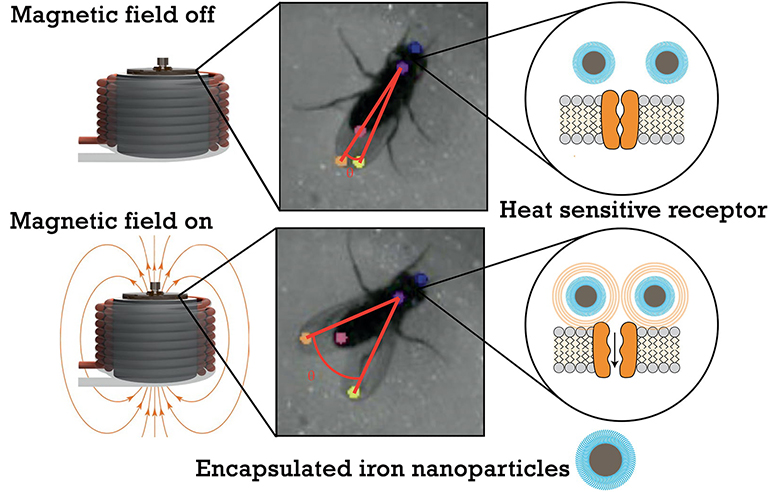Scientists at Rice University developed a system to wirelessly and rapidly activate specific brain circuits using magnetic fields. The technology has been developed in fruit flies, a common experimental animal, but the researchers hope that it could help in understanding the brain and to develop new treatments for neurological disorders in humans.
The technology involves genetically modified fruit flies that express heat sensitive ion channels in specific brain circuits. The researchers inject magnetic nanoparticles into the flies and then cause them to heat up using magnetic fields. This heat activates the ion channels and the neurons in which they are present, providing wireless neural activation. The technique may pave the way for therapeutic interventions that rely on minimally invasive activation of neural pathways.
Teams around the world have been developing techniques to activate neurons in living organisms. However, many such approaches are somewhat invasive. For example, optogenetics requires light to illuminate the neurons in question, and this is typically delivered through an optical fiber that is inserted into the neural tissue. However, in terms of translating such technologies to human patients, finding non-invasive alternatives would be preferable.
“To study the brain or to treat neurological disorders the scientific community is searching for tools that are both incredibly precise, but also minimally invasive,” said Jacob Robinson, one of the developers of the new technique. “Remote control of select neural circuits with magnetic fields is somewhat of a holy grail for neurotechnologies. Our work takes an important step toward that goal because it increases the speed of remote magnetic control, making it closer to the natural speed of the brain.”

The secret behind this latest technology is a heat-sensitive ion channel, which the researchers introduced into the fruit flies through genetic engineering. The channels were present in neurons that are involved in a common mating gesture, a partial spread of the wings. This allowed the researchers to easily determine if the technique worked, as the flies would rapidly adopt the pose when the neurons were activated. Magnetic nanoparticles allowed the researchers to heat the neurons using magnetic fields, resulting in rapid neuronal activation.
“We made progress because the lead author, Charles Sebesta, had the idea of using a new ion channel that was sensitive to the rate of temperature change,” said Robinson. “By bringing together experts in genetic engineering, nanotechnology and electrical engineering we were able to put all the pieces together and prove this idea works. This was really a team effort of world-class scientists we were fortunate enough to work with.”
The Rice researchers hope that the technology will pave the way for non-invasive interventions in the nervous system. “The long-term goal of this work is to create methods for activating specific regions of the brain in humans for therapeutic purposes without ever having to perform surgery,” said Robinson. “To get to the natural precision of the brain we probably need to get a response down to a few hundredths of a second. So there is still a way to go.”
See a video of the technique in action below:
Study in Nature Materials: Subsecond multichannel magnetic control of select neural circuits in freely moving flies
Via: Rice University
